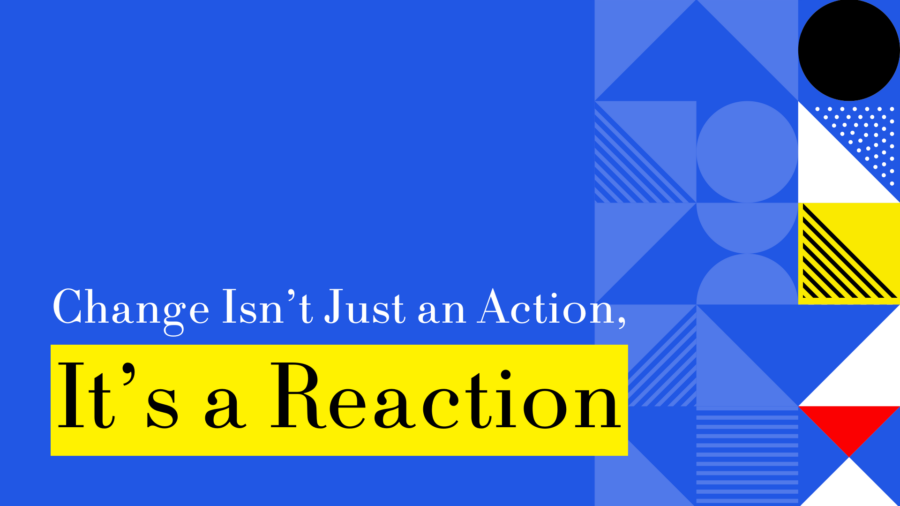In 1847, Dr. Ignaz Semmelweis faced a grim puzzle. There were two maternity wards at the Viennese hospital where he worked, but each had a drastically different maternal mortality rate. In the ward run by the doctors, one of every five women died, while in the ward run by midwives, it was only one of every fifty.
Semmelweis suspected that the doctors were unknowingly transferring something fatal from the dead to the living, and so he proposed a simple change: handwashing between procedures.
Although the mortality rate dropped, Semmelweis’s colleagues rejected his theory because it challenged their preexisting beliefs about disease causes and about themselves. Tragically, Semmelweis’s colleagues abandoned the change, and mortality rates soared again. Frustrated, Semmelweis publicly and ferociously berated those who opposed his idea.
Ten years later, Florence Nightingale was nursing soldiers during the Crimean War. While she also faced high mortality rates caused by infections among her patients, she ultimately produced a far different result. Like Semmelweis, she lacked knowledge of germ theory and focused on improving hygiene as a possible solution. Unlike Semmelweis, however, Nightingale was successful in making handwashing a standard practice for doctors. Her colleagues directly credited her with reducing mortality and history now remembers her as a pioneer of modern nursing.
Why did Semmelweis fail and Nightingale succeed?
The primary difference was their approach to creating change among the doctors they worked with. Semmelweis directly challenged his colleagues’ long-standing beliefs—especially about their gentlemanly cleanliness!—and emphasized how they were making the problem worse.
Nightingale took a more aligned approach. She positioned hand-washing as one of a number of measures to remove what “miasmas,” or infected air, left behind. In Nightingale’s approach, the doctors weren’t the villains; disease was.
Even though her reasoning was ultimately incorrect, by introducing a lifesaving practice without confronting established norms Nightingale made the change easier to implement, and its effects endured.
Ultimately, both Semmelweis and Nightingale illustrate the power of one of the most critical principles of communicating change:
Change isn’t just an action, it’s a reaction
Many of us view change as an action people take. Although that’s true, it usually starts as a reaction to a change in something else, much of which is out of our control.
When the temperature drops, you grab a sweater.
When the stock market drops, you find ways to cut expenses or find opportunities to invest.
You can’t control the economy, you can’t control the competition, you can’t control world events. Even when you control which change to implement, you can’t control someone’s reaction to it—but you can affect it. That matters because how a person reacts to a proposed change, especially when they’re first introduced to it, is the key to whether that change happens in the first place. It’s also key to how long support for it lasts.
The Holy Grail of Change
Change may begin with external triggers, but sustained change requires an internal and renewable reward.
That reward is known as intrinsic motivation, and it’s the holy grail of change.
When someone decides to continue acting in a new way simply because they want to, because it feels right, and because it feels like an extension of who they are and who they want to be, then the change reinforces their sense of self.
For example, many leaders enjoy mentoring others, even when it’s not part of their job duties. Helping someone else grow and reach their potential aligns with their values and beliefs about leadership or even about being a good person. The more a change resonates, the more it makes people feel good about themselves and how others see them, and the more they will continue to do it.
How can you create intrinsic motivation in someone else?
You can’t.
Intrinsic motivation literally happens within the other person. That said, how you present a change directly affects whether it resonates enough to inspire the intrinsic motivation that lasting change requires. For internally motivated change to occur, someone must see a clear link between the action you’re asking them to take and an outcome they personally desire. But that’s not enough. They also need to work through their pre-existing beliefs, perceptions about how hard the change will be, and the emotions that arise as a result.
When you initiate a change, you’re often the primary source of the information that influences what other people ultimately think and feel about that change. This is why understanding change as a reaction is so critical: much of what people are reacting to is you.
Align your actions with the reaction you want
What you say and show about a change deeply influences someone else’s internal reaction to it. That’s why it’s so critical to align your approach and actions to the outcome you want.
- Have you established the link between what someone wants and what you’re asking them to do?
- Have you surfaced the principles that explain your reasoning? That destablize the status quo? That make a new option impossible to ignore?
- Have you made the actions they need to take achievable and concrete?
- Have you started from the belief that who you’re talking to is already smart, capable, and good?
Change isn’t just an action, it’s a reaction. Your approach can just as easily impede a change as inspire one.
Until next time,
Tamsen
P.S. Guess what?! What you just read was an excerpt of the first chapter of my new book, Say What They Can’t Unhear. It’s coming out October 8, 2024! If you’re looking to spark change in your audience in a way that has them excited and motivated, that pushes them beyond temporary action, and that makes them feel empowered instead of manipulated, then Say What They Can’t Unhear is the resource you need in your back pocket.
